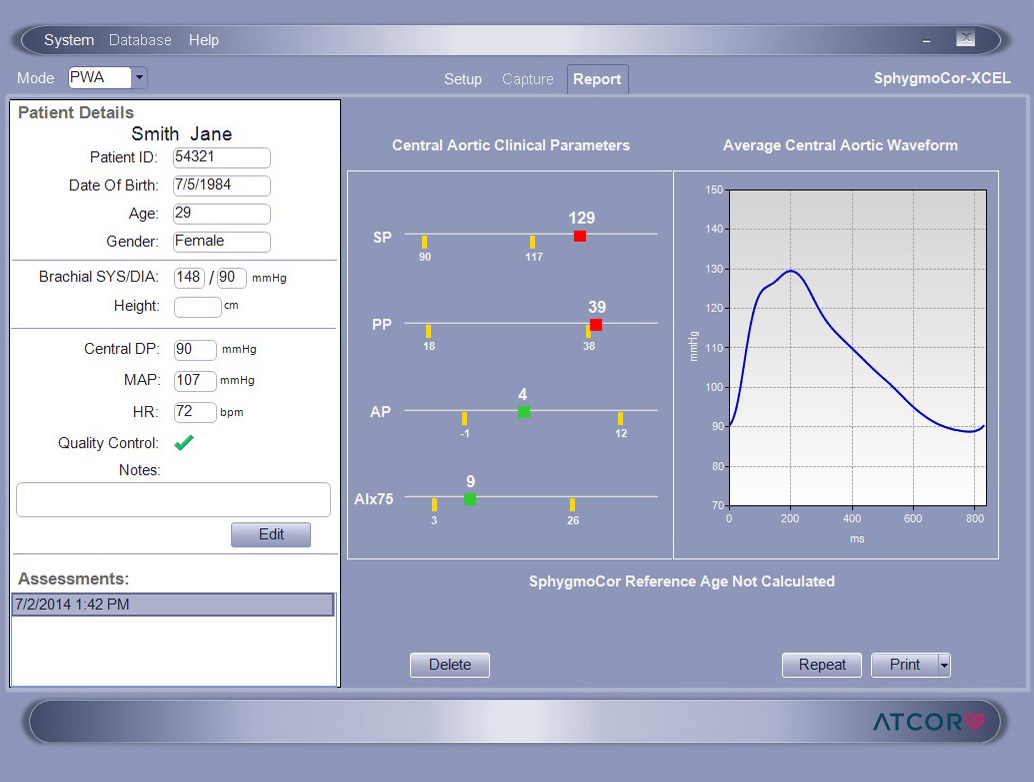SphygmoCor® Platform

SphygmoCor® technology enables noninvasive measurement of the central aortic pressure waveform. The predictive superiority of central arterial pressure waveform analysis (PWA) over brachial blood pressure is primarily due to the closer proximity of the ascending aorta to important target organs such as the heart, brain, and kidneys.[1]
Three aspects of central arterial PWA are especially important:
1. Individual variability in the difference between central and brachial pressures can be significant and clinically important. [2-4] 2. Central pressures cannot be reliably inferred from brachial pressures. [2-4] 3. Medications may have significantly different effects on brachial blood pressure than on the central arterial pressure waveform. [5-7]SphygmoCor offers noninvasive assessment of the central arterial pressure waveform, including both pressures and indices of arterial stiffness—providing noninvasive measurement of pressure that the heart, brain, and kidneys actually experience.
Noninvasive Central Arterial Pressure Waveform Analysis
Central systolic blood pressure cannot be estimated from the brachial systolic value. In one study of more than 10,000 adults aged 18 to 101 years, McEniery et al reported individual brachial systolic pressures that ranged from 100 to 200mmHg. [4] They found individual variability between brachial and central systolic pressures ranging from as few as 2-3mmHg to approximately 30mmHg. Because of this individual variability, a patient’s central pressure cannot be reliably inferred from their brachial pressure measurement.
The SphygmoCor XCEL System derives the central aortic pressure waveform using a blood pressure cuff. The procedure can be conducted in the office setting and is easy to perform, painless, and reproducible.
Over 1,400 peer-reviewed publications feature SphygmoCor noninvasive technology. Major independent studies such as the Conduit Artery Function Evaluation (CAFE) Study, the Strong Heart Study, and the Anglo-Cardiff Collaborative Trial have demonstrated that noninvasive central pressure measurement provides important information that cannot be obtained from standard brachial cuff blood pressure measurement.
